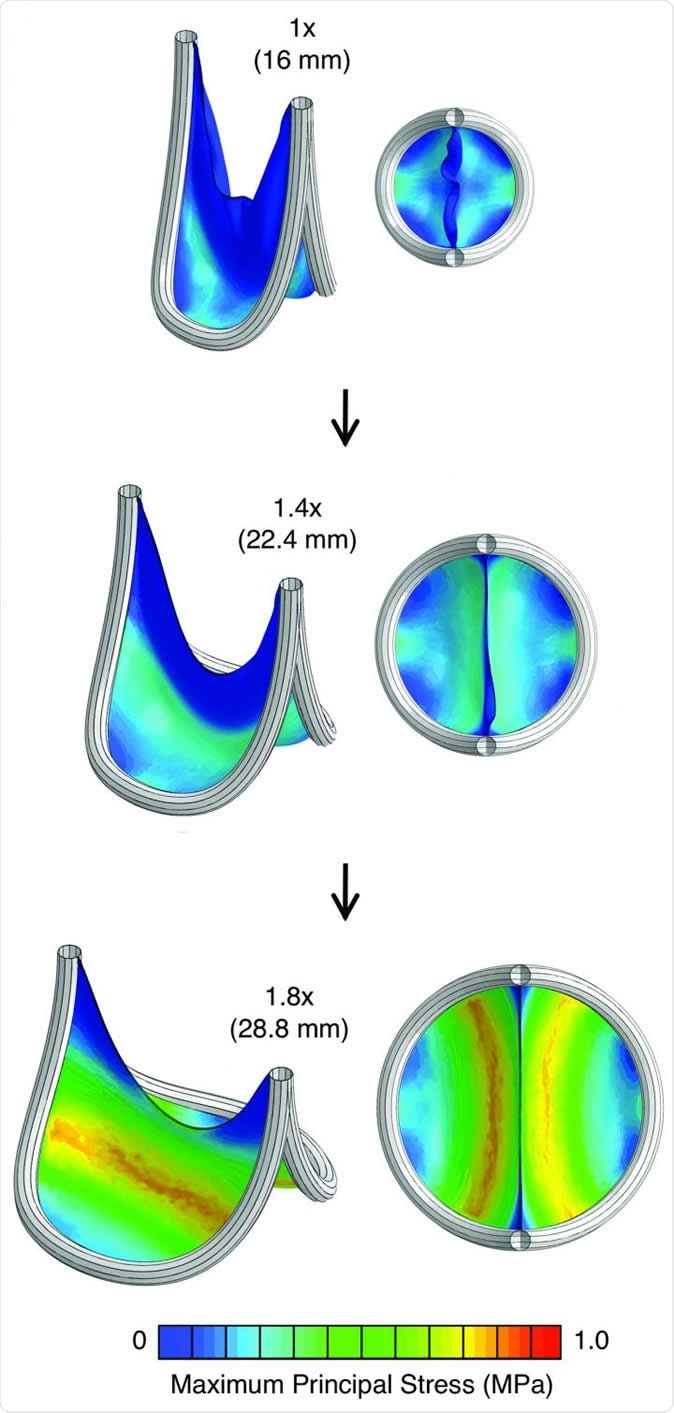A breakthrough medical technology can save the lives of children with heart defects. Scientists have developed the first-ever heart valve that grows with the child, reducing the need for risky heart surgeries in the future.
Children with congenital heart disease who need valve replacement often undergo multiple surgeries because the valve cannot grow as the child's heart grows. They need multiple heart surgeries to change the heart valve to accommodate the growing size of the heart. However, these surgeries are risky and pose a threat to the child's health.
To solve this problem, a team of scientists from Boston Children's Hospital developed a prosthetic valve that mimics the geometry of the human venous valve. Composed of polymeric leaflets attached to a stainless-steel stent, the valve can be expanded by a minimally invasive balloon catheter procedure, reducing invasive open-heart surgeries.
The doctors can use keyhole surgery to insert a rubber tube attached to a deflated balloon in the valve. They can inflate it depending on the child's heart size.

The valve replacement expanding to accommodate different lengths in implanted sheep. This material relates to a paper that appeared in the Feb. 19, 2020, issue of Science Translational Medicine, published by AAAS. The paper, by S.C. Hofferberth at Boston Children's Hospital in Boston, MA; and colleagues was titled, "A geometrically adaptable heart valve replacement." Image Credit: S.C. Hofferberth et al., Science Translational Medicine (2020)
Multiple heart surgeries
Congenital heart valve disease is life-threatening, and children with this condition may need valve replacement early in their lives. However, children grow, and the artificial heart valve may not be able to accommodate the heart's increasing size.
Many children with this condition face high-risk and multiple open-heart surgeries to remove the valves and replace then with bigger ones.

The scientists used computational modeling to predict how their valve replacement expanded to deal with the stress of blood flow. This material relates to a paper that appeared in the Feb. 19, 2020, issue of Science Translational Medicine, published by AAAS. The paper, by S.C. Hofferberth at Boston Children's Hospital in Boston, MA; and colleagues was titled, "A geometrically adaptable heart valve replacement." Credit: S.C. Hofferberth et al., Science Translational Medicine (2020)
For the first time, the new valve, a biomimetic prosthetic valve, adapts to accommodate growth and structural asymmetries within the heart. In previous heart valve models, they contain three leaflet-like flaps providing a one-way inlet or outlet for blood flow. However, in the new heart valve, it only has two flaps, with a geometry designed to maintain closure, and a one-way flow even when the veins expand in diameter.
"Veins carry approximately 70 percent of our blood volume. The vein dimensions can change dramatically depending on body position, yet the valves must remain functional. We mimicked the geometric profile of the human venous valve to design a bi-leaflet valve of programmed dimensions that is adaptable to growth without loss of one-way flow control," Dr. Sophie C. Hofferberth, a surgical resident at Brigham and Women's Hospital and lead researcher at Boston Children's Hospital, said.
New artificial heart valve on the way
The new heart valve has been tested in large animal models, computer simulations, and benchtop studies, demonstrating that it works across a broad range of sizes. What is more, it retains functionality and efficacy when it is expanded through a balloon catheter procedure.
The team tested the prosthetic heart valve in growing young lambs. When implanted on the animals, it exhibited good performance without the blockage of blood flow. In another test in other lambs, the valves stayed functional for ten weeks without causing inflammation or injury to the heart tissues.
Though the study requires human testing and longer-follow up times, there is more work needed to validate the design. If it passes through rigorous testing, it can help more than 1.35 million children across the globe who were born with a congenital heart valve disorder.
The researchers also found that the new prosthetic valve promotes favorable blood flow through the valve, reducing the risk for blood clot formation, which is often observed in existing valve replacement devices. With the invasive heart valve device, there are fewer complications that may endanger the life of the child.
The study was published in the journal Science Translational Medicine.
What is congenital heart valve disease?
The heart pumps blood throughout the body throughout the day, and it contains valves that are responsible for keeping the blood from flowing backward. As a result, the blood flow is controlled, and the oxygenated and non-oxygenated blood will not mix.
A congenital heart valve disease happens if one or more of the valves in the heart do not work well, leading to problems such as regurgitation, stenosis, and atresia. Usually, this occurs when a heart's valves do not develop before birth, causing a defect that keeps the valve from closing completely.
Regurgitations happen when the blood backflows because the valve does not close tightly or adequately. The most common cause of blood backflow is a valve prolapse.
Stenosis happens when the flaps become thick, stiff, or fuse, resulting in the inability of the valve to open fully. Stenosis leads to blockage of blood flow. Atresia pertains to a condition when the valve does not have an opening for the blood to pass through.
All these conditions lead to a wide range of heart problems and can endanger the life of the child. Over time, these problems can strain the heart because it works double-time to compensate for the valve defect. It can cause serious problems such as aortic aneurysm, dilated cardiomyopathy, and heart failure.
Source:
National Heart, Lung, and Blood Institute. (2020). Heart Valve Disease. https://www.nhlbi.nih.gov/health-topics/heart-valve-disease.
Journal reference:
Hofferberth, S., Saeed, M., Tomholt, Fernandes, M., Payne, C., Price, K., Marx, G., Esch, J., Brown, J. et al. (2020). A geometrically adaptable heart valve replacement. Science Translational Medicine. https://stm.sciencemag.org/content/12/531/eaay4006?rss=1.